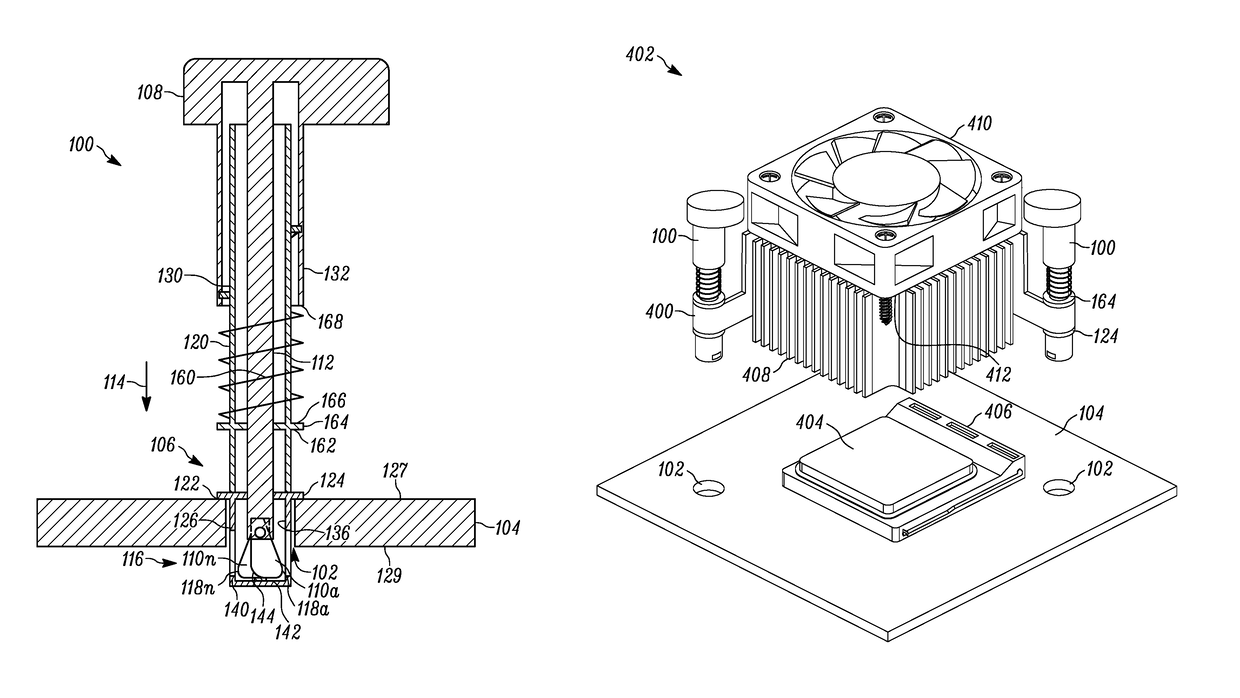Heat sink connector pin and assembly
a technology of heat sink and connector pin, which is applied in the direction of screws, threaded fasteners, electrical apparatus construction details, etc., can solve the problems of manual inserting of push pins, difficult removal, and inability to meet the needs of users,
- Summary
- Abstract
- Description
- Claims
- Application Information
AI Technical Summary
Benefits of technology
Problems solved by technology
Method used
Image
Examples
Embodiment Construction
[0012]In one example, a heat sink connector pin includes a pin assembly with linkage that provides the movement of a pin head or cap in a downward movement to cause multiple movable fingers at an opposing end of the pin to move from a retracted position that allows insertion of the heat sink connector pin through an opening in the substrate, such as a through-hole, to mechanically move to an outward extended position so that the multiple fingers engage or grasp a bottom surface of the substrate. In one example, the pin head is rotatable in a twisting action to cause downward movement of a shaft structure to cause the fingers to move in an outward extended position to grasp the bottom surface of the substrate such as an integrated circuit socket or printed circuit board or any other suitable substrate. In other examples, any suitable force action may be employed other than a rotational or twisting motion that causes the shaft of the pin assembly to move in a downward motion to cause ...
PUM
 Login to View More
Login to View More Abstract
Description
Claims
Application Information
 Login to View More
Login to View More - R&D
- Intellectual Property
- Life Sciences
- Materials
- Tech Scout
- Unparalleled Data Quality
- Higher Quality Content
- 60% Fewer Hallucinations
Browse by: Latest US Patents, China's latest patents, Technical Efficacy Thesaurus, Application Domain, Technology Topic, Popular Technical Reports.
© 2025 PatSnap. All rights reserved.Legal|Privacy policy|Modern Slavery Act Transparency Statement|Sitemap|About US| Contact US: help@patsnap.com



